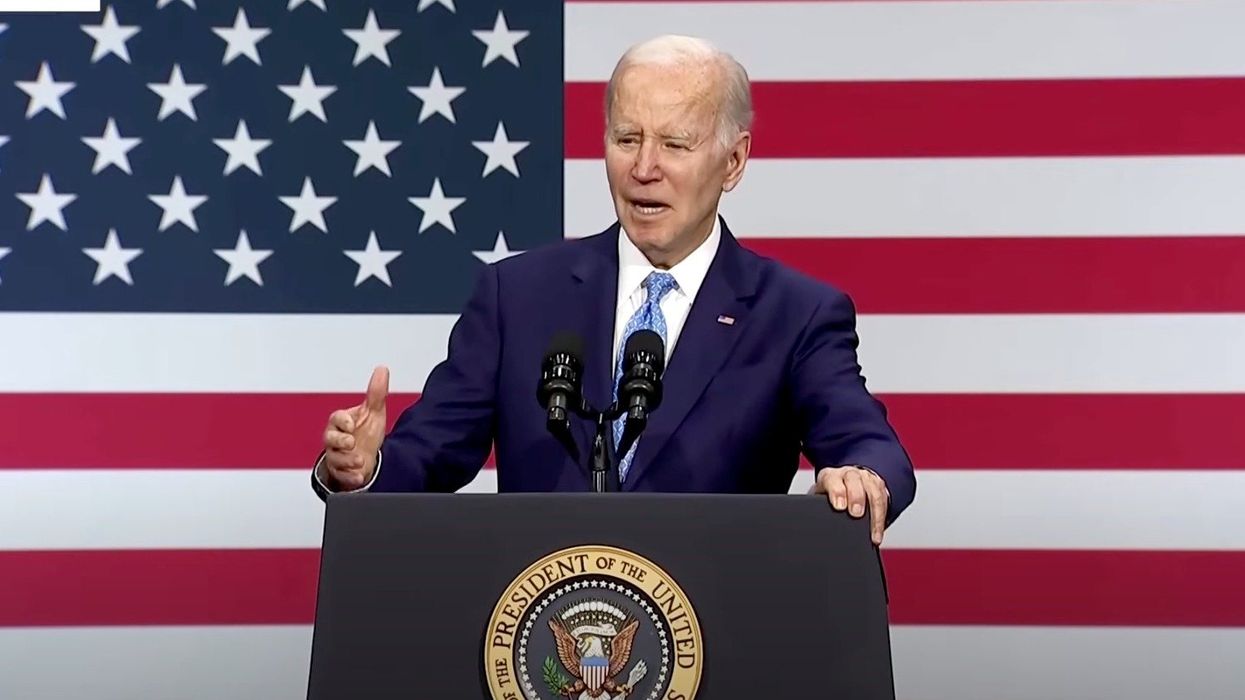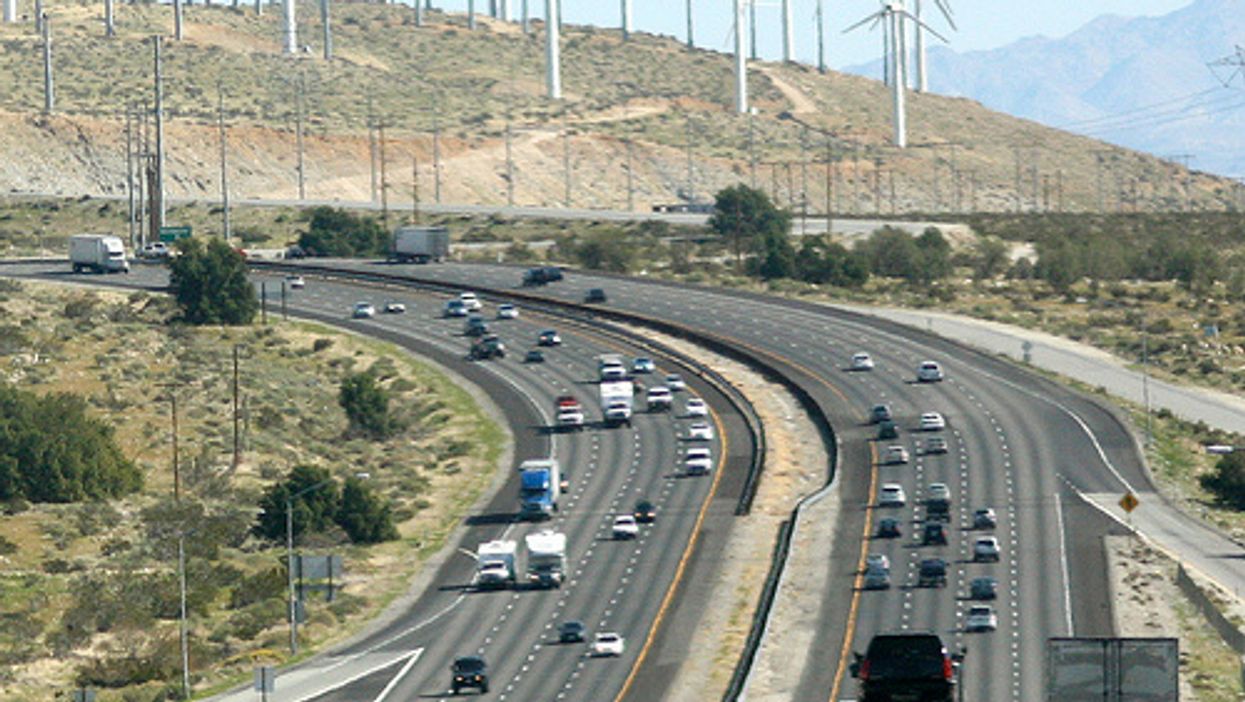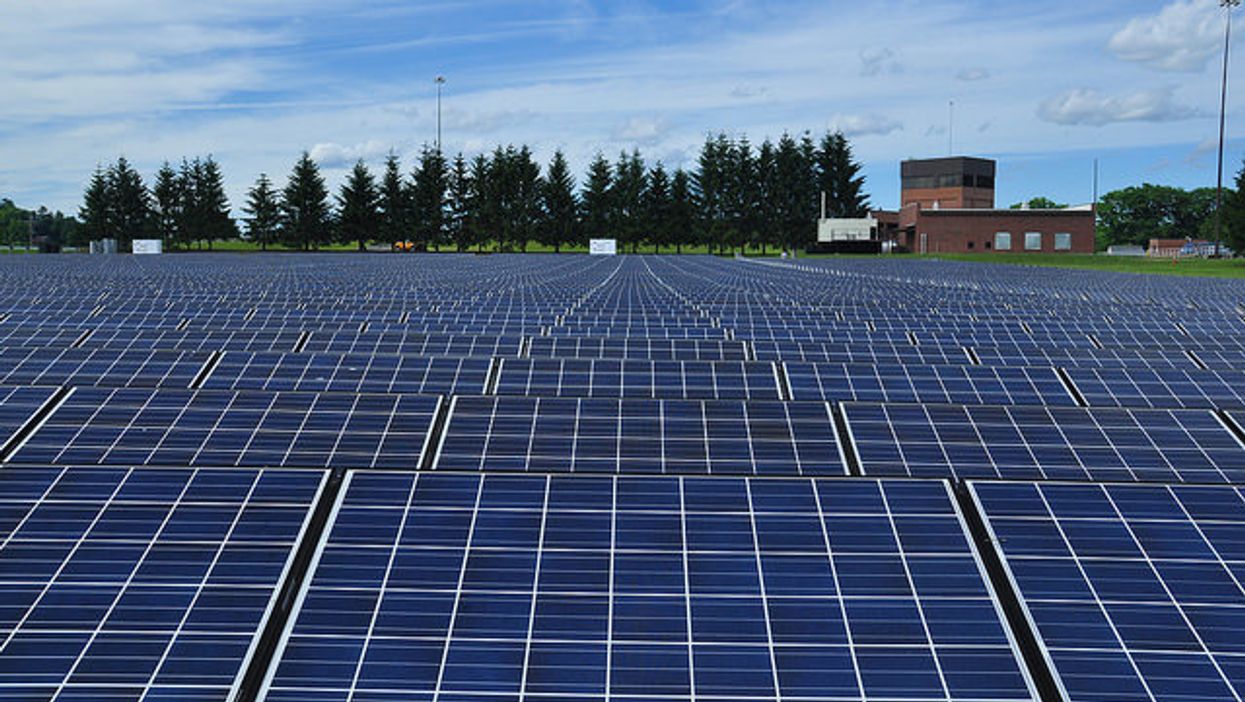Biden Oversees Booming Growth In Oil Production (But Clean Energy Too)
Donald Trump recently warned that Joe Biden would lead us into World War II, a conflict that ended almost 80 years ago. Another world event he may not be current on is America's boom in oil production — never mind the green energy revolution.
"We are going to drill, baby, drill," Trump said on a recent Fox News town hall.
Actually, America is now pumping oil in record amounts. The U.S. now accounts for one in every eight barrels produced in the world. Prices are coming down, too.
As for Biden's clean energy program, it foresees a transition away from planet-heating fossil fuels. It also recognizes we're not there yet.
An essential piece in the move toward green energy is a switch-over to electric vehicles from the gasoline-powered kind. This is a worldwide phenomenon that the Biden administration has joined through a variety of subsidies.
In China, EVs are expected to reach 38 percent of total car sales this year, versus 13 percent of new purchases in the U.S. China is experimenting with vehicle-to-grid technology that would, amazingly, enable cars to feed electricity back into the system when demand surges. America should take notice.
In Trump's backward ideology, clean energy programs are a "new scam business." Trump is bashing the new technology at a time when U.S. automakers have planned $100 billion in electric car investments. Apparently ignorant of new developments, he keeps saying that EVs are "too expensive" and they "don't go far enough."
Dan Neil, car columnist at The Wall Street Journal, acknowledges some past glitches with EVs but then offers an update on Trump's claims. People who actually drive one of the new models, Neil writes, are finding it "quicker, quieter, more refined and responsive, more efficient, more connected and cheaper to operate than its gas-powered equivalent. ... After a few miles in an EV, going back to internal combustion feels like returning to whale-oil lamps."
Charging has already become easier as Biden's program to build half a million public fast chargers bears fruit. Other carmakers, meanwhile, have adopted Tesla's charging standard, enabling their EVs to use Tesla's supercharging network.
"Pretty soon range anxiety will be returned to neurotics," Neil adds.
As for the prices on EVs, they are expected to plummet in short order. Tesla is expected to soon introduce a Model 2 priced at only $25,000.
But in Trump world, everything has to be turned into a culture war. U.S. automakers consider these attacks worrisome, and so should their workers.
"I never thought I would see the day when our products were so heavily politicized, but they are," Ford Motor Co.'s executive chair Bill Ford said.
By the way, Americans remain free to buy gas-powered vehicles. But many are looking at plug-in hybrids as well.
The boost in U.S. oil production is coming largely from the usual parts of oil country: Texas, New Mexico, North Dakota, and Oklahoma. It reflects improved technology rather than an expansion in the number of rigs. In other words, companies are now extracting more oil from the same location, which means they can obtain it more cheaply. Oil producers are not complaining.
"Companies are making money and investors are making money," Bloomberg's energy columnist, Javier Blas, said. "So everyone is loving it."
The people who are not loving it are the Saudis. U.S. shale oil is growing and making money at the same time, Blas adds, and "this is what really terrorized OPEC."
Is it possible that America is reducing reliance on foreign oil while also addressing the planetary need to move toward clean energy? It is possible, and it's also happening. Biden's America is enjoying a boom in both.
Reprinted with permission from Creators.





